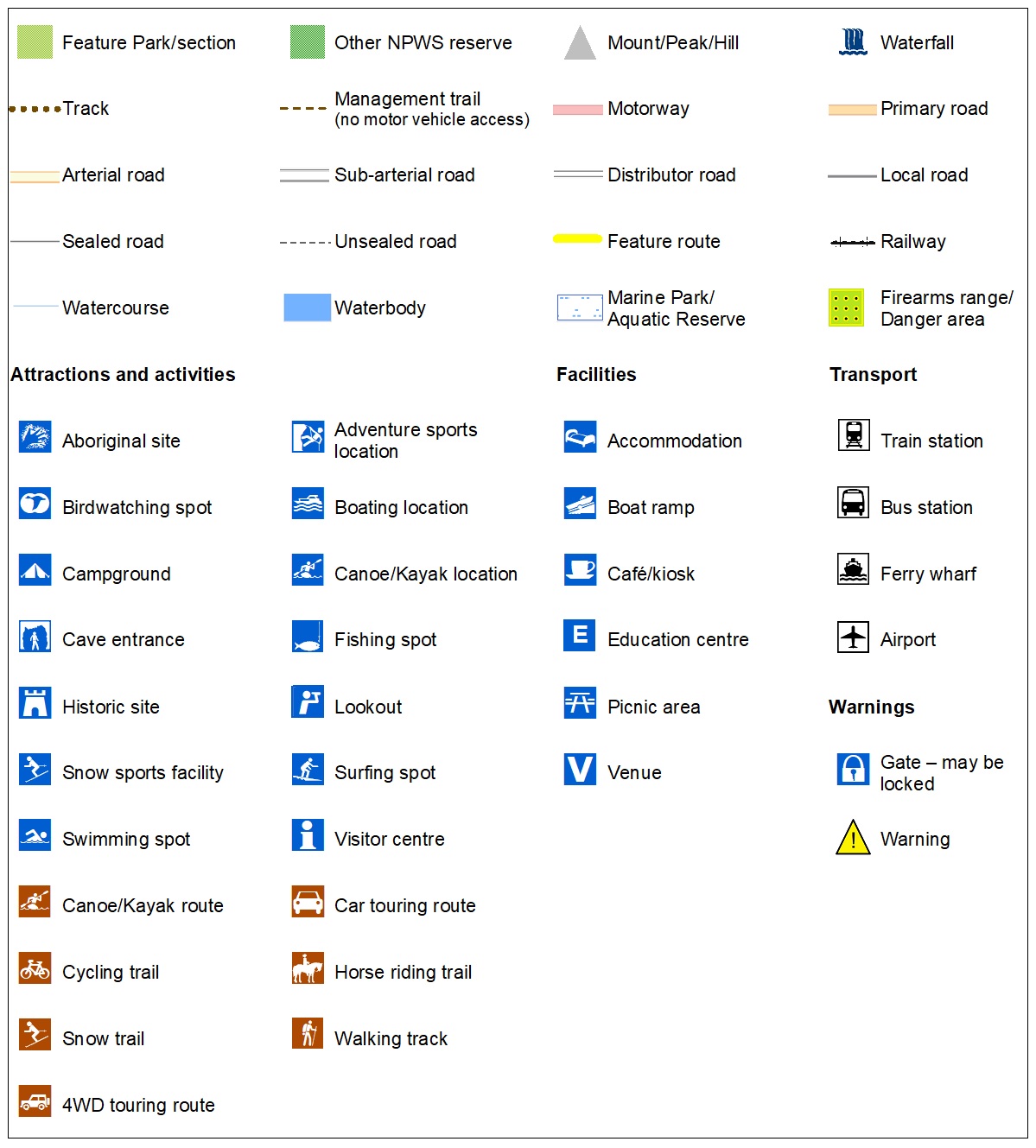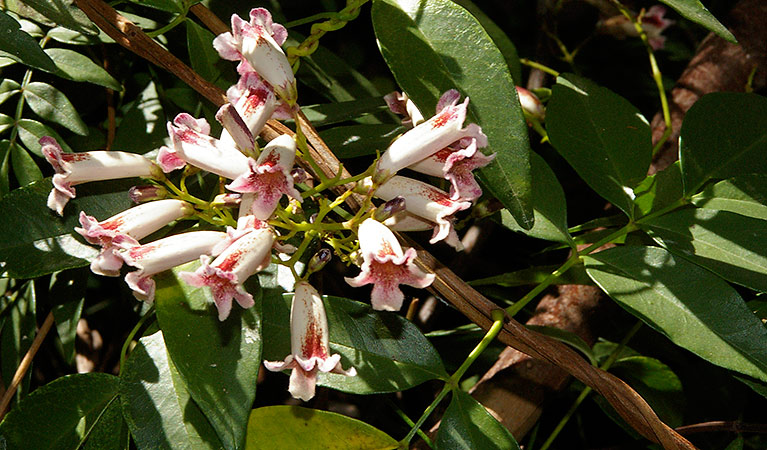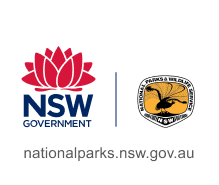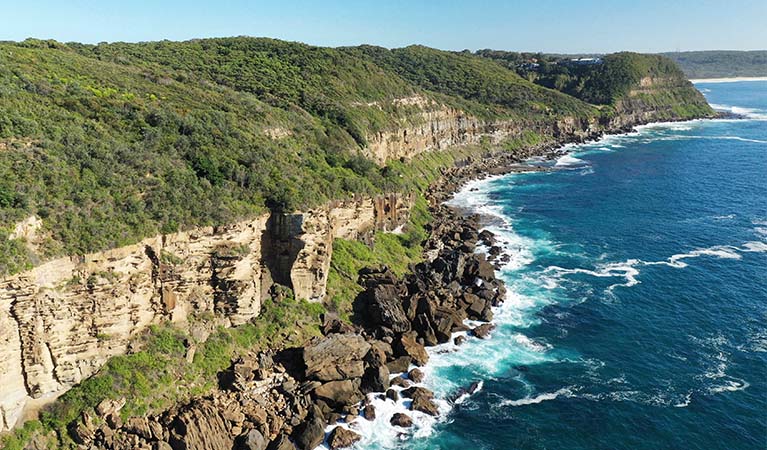Glenrock State Conservation Area
Overview
Glenrock State Conservation Area, only 5km from Newcastle, is the perfect place for mountain biking. Explore the park’s beaches, rainforest walks and waterfalls on a school excursion or guided tour.
Read more about Glenrock State Conservation Area
Located between Newcastle and Lake Macquarie, Glenrock State Conservation Area offers an astounding array of recreational opportunities.
Glenrock embraces the last surviving pocket of coastal rainforest in the region, home to a range of animals, like bandicoots, bats and gliders. So remember to leave your pets at home. The park also protects a number of ancient Aboriginal sites.
One of the city’s most popular beaches lies within the park’s boundaries, but there is much more here than sand and surf. Take your mountain bike and explore the scenic cycling trails, walk the rainforest and waterfall tracks, launch a hang glider off the cliffs or enjoy a spot of fishing.
Local alerts
For the latest updates on fires, closures and other alerts in this area, see https://www.nationalparks.nsw.gov.au/visit-a-park/parks/glenrock-state-conservation-area/local-alerts
Map

Map legend

Contact
- in the North Coast region
Glenrock State Conservation Area is always open but may have to close at times due to poor weather or fire danger.
-
-
Newcastle office
02 4946 4100
Contact hours: Monday to Friday, 8.30am to 4.30pm. - 1 Wetlands Place, Shortland NSW 2307
-
Email: npws.lowerhunter@environment.nsw.gov.au
-
Newcastle office
Visitor info
All the practical information you need to know about Glenrock State Conservation Area.
Maps and downloads
Nearby towns
Charlestown (3 km)
Charlestown lies just 12 km south of Newcastle. It's a key town centre at the northern end of Lake Macquarie.
Newcastle (7 km)
Newcastle is a harbour city surrounded by amazing surf beaches that are linked by a great coastal walk, the Bathers Way. The walk from Nobbys Beach to Merewether Beach takes about three hours and is a great way to explore the city.
Cessnock (46 km)
Some of the finest wines in the world are created in the Hunter Valley and its towns, gourmet food is acclaimed and luxury, boutique accommodations are matched by the most beautiful natural scenery.
Learn more
Glenrock State Conservation Area is a special place. Here are just some of the reasons why:
Stride, ride, or glide

Glenrock is magnificent for mountain bike riding, with trails suited for beginners through to advanced. 14km of single track and 20km of management trails wind through open forest and woodlands in the northern half of the park, with coastal views along the way. If you prefer to travel on foot there are excellent walks, including the Yuelarbah track, part of the Great North walk from Sydney to Newcastle. Horse riding is also permitted on some trails. And experienced hang gliders have a choice of two launching pads within the park and will enjoy stunning views of the Newcastle coastline.
- Bombala walking track Bombala walking track weaves through bush in Glenrock State Conservation Area, giving glimpses of the ocean, before descending to secluded Dudley Beach.
- Glenrock mountain biking trails Spend the day riding your mountain bike on the trails in Glenrock State Conservation Area near Newcastle. There are rides to suit all levels, and even the kids can ride.
- Mountain bike skills instruction at Glenrock Take your mountain biking to the next level with skills instruction by Momentum Is Your Friend. Held at Glenrock State Conservation Area, these helpful sessions are coached by friendly and professional instructors.
- Yuelarbah walking track Yuelarbah walking track is a great day walk within Glenrock State Conservation Area, near Newcastle. It features a lookout with scenic views, waterfalls and places to picnic.
Wildflowers and wildlife

Glenrock State Conservation Area has a diverse range of plant life, with over 70 plant species per hectare. A nature wonderland, the area conserves several significant vegetation communities, including 5 threatened ecological communities and 7 threatened plant species, including pink bells, coastal bush peas and white-flowered wax plants. It’s also home to over 140 species of birds, echidnas, bats and gliders. And during migration season you can spot whales from the many coastal lookout points in the reserve.
- Bombala walking track Bombala walking track weaves through bush in Glenrock State Conservation Area, giving glimpses of the ocean, before descending to secluded Dudley Beach.
- Glenrock Aboriginal culture and walking tour Walk alongside your Aboriginal guide Amos on this captivating tour on Worimi Country in Glenrock State Conservation Area, near Newcastle. You'll learn about local Aboriginal culture and heritage.
- Glenrock discovery walking tour Unlock the secrets of Glenrock State Conservation Area on this exciting 3-hour guided walk with Geotrail and Nature Tours.
- Junior ranger: Glenrock coastal adventure tour These school holidays, join us for an adventure at Dudley Beach in Glenrock State Conservation Area, near Newcastle. Discover the fossilised forest on the rock platforms there.
- Ocean rockpool nature tour: Glenrock Discover the amazing world of rockpools along the shores of Merewether and Burwood Beach, on this 2hr tour in Glenrock State Conservation Area, near Newcastle.
Back to nature

Glenrock boasts a diverse environment from deep gullies to coastal rainforest, beaches and rocky cliffs. A major feature is Glenrock Lagoon, fed by Flaggy and Little Flaggy creeks to the west. The sandstones in these creeks have resisted erosion, resulting in attractive waterfalls and rockpools for which the area has long been renowned. When you've explored the inland, head for the surf at Dudley and Burwood Beaches. And keep an eye out for fossils, which you can find throughout the park. At Dudley headland, you can see fossilised tree trunks embedded in the rock platform.
- Glenrock discovery walking tour Unlock the secrets of Glenrock State Conservation Area on this exciting 3-hour guided walk with Geotrail and Nature Tours.
- Junior ranger: Glenrock coastal adventure tour These school holidays, join us for an adventure at Dudley Beach in Glenrock State Conservation Area, near Newcastle. Discover the fossilised forest on the rock platforms there.
- Kids and adults mountain bike coaching Glenrock Ride your mountain bike through Glenrock State Conservation Area on a tour with Bike and Fitness. There are experiences to suit all ages and skill-levels.
- Leggy Point loop walking track Take in the views of the ocean and coastline all the way to Newcastle from Leggy Point loop walking track, a popular walk for the whole family in Glenrock State Conservation Area.
- Ocean rockpool nature tour: Glenrock Discover the amazing world of rockpools along the shores of Merewether and Burwood Beach, on this 2hr tour in Glenrock State Conservation Area, near Newcastle.
Connection to Country

Glenrock State Conservation Area is the traditional land of the Awabakal people. They favoured the area for the abundance of food, including marine life and bush tucker, as well as the stone and clay resources available here. The park today contains a number of ancient Aboriginal sites, including campsites, middens and axe grinding grooves. You can find out more about the Aboriginal cultural heritage of this park on an Aboriginal Discovery tour.
- Aboriginal culture Experience Glenrock State Conservation Area through the eyes of an Aboriginal person on this Stage 2 (Years 3-4) Aboriginal culture Geography excursion.
- Glenrock Aboriginal cultural tour Join an Aboriginal Discovery ranger on a cultural journey you won’t forget in Glenrock State Conservation Area, near Newcastle. Connect with this beautiful country and listen to cultural stories as on you walk on the lands of the Awabakal people.
- Glenrock Aboriginal culture and walking tour Walk alongside your Aboriginal guide Amos on this captivating tour on Worimi Country in Glenrock State Conservation Area, near Newcastle. You'll learn about local Aboriginal culture and heritage.
- Leggy Point loop walking track Take in the views of the ocean and coastline all the way to Newcastle from Leggy Point loop walking track, a popular walk for the whole family in Glenrock State Conservation Area.
- Ocean rockpool nature tour: Glenrock Discover the amazing world of rockpools along the shores of Merewether and Burwood Beach, on this 2hr tour in Glenrock State Conservation Area, near Newcastle.
Plants and animals protected in this park
Animals
-

Humpback whale (Megaptera novaeangliae)
The humpback whale has the longest migratory path of any mammal, travelling over 5000km from its summer feeding grounds in Antarctica to its breeding grounds in the subtropics. Its playful antics, such as body-rolling, breaching and pectoral slapping, are a spectacular sight for whale watchers in NSW national parks.
-

Superb fairy wren (Malurus cyaneus)
The striking blue and black plumage of the adult male superb fairy wren makes for colourful bird watching across south-eastern Australia. The sociable superb fairy wrens, or blue wrens, are Australian birds living in groups consisting of a dominant male, mouse-brown female ‘jenny wrens’ and several tawny-brown juveniles.
-

Short-beaked echidna (Tachyglossus aculeatus)
One of only 2 egg-laying mammals in the world, the short-beaked echidna is one of the most widespread of Australian native animals. Covered in spines, or quills, they’re equipped with a keen sense of smell and a tube-like snout which they use to break apart termite mounds in search of ants.
-

Eastern bentwing-bat (Miniopterus schreibersii oceanensis)
Eastern bentwing-bats congregate in caves across the east and north-west coasts of Australia, in colonies of up to 150,000. These small Australian animals weigh around 13-17g and can reach speeds of up to 50km per hour. Eastern bentwing-bats use both sight and echolocation to catch small insects mid-air.
-

Yellow-tailed black cockatoo (Calyptorhynchus funereus)
The yellow-tailed black cockatoo is one of the largest species of parrot. With dusty-black plumage, they have a yellow tail and cheek patch. They’re easily spotted while bird watching, as they feed on seeds in native forests and pine plantations.
-

Common brushtail possum (Trichosurus vulpecula)
One of the most widespread of Australian tree-dwelling marsupials, the common brushtail possum is found across most of NSW in woodlands, rainforests and urban areas. With strong claws, a prehensile tail and opposable digits, these native Australian animals are well-adapted for life amongst the trees.
-

Common ringtail possum (Pseudocheirus peregrinus)
Commonly found in forests, woodlands and leafy gardens across eastern NSW, the Australian ringtail possum is a tree-dwelling marsupial. With a powerful tail perfectly adapted to grasp objects, it forages in trees for eucalypt leaves, flowers and fruit.
-

Australian brush turkey (Alectura lathami)
The Australian brush turkey, also known as bush or scrub turkey, can be found in rainforests along eastern NSW. With a striking red head, blue-black plumage and booming call, these distinctive Australian birds are easy to spot while bird watching in several NSW national parks.
-

Eastern blue-tongue lizard (Tiliqua scinciodes)
The eastern blue-tongue lizard, one of the largest skinks in Australia, is found throughout most of NSW. When threatened, the eastern blue-tongue lizard displays its blue tongue in a wide-mouthed intimidating show. Not an agile animal, they feed on slow-moving beetles and snails.
-

Eastern water dragon (Intellagama lesueurii lesueurii)
The eastern water dragon is a subaquatic lizard found in healthy waterways along eastern NSW, from Nowra to halfway up the Cape York Pensinsula. It’s believed to be one of the oldest of Australian reptiles, remaining virtually unchanged for over 20 million years.
-

Grey-headed flying-fox (Pteropus poliocephalus)
The grey-headed flying fox is Australia's largest native bat, with a wingspan up to 1m. This threatened species travels up and down south-eastern Australia and plays a vital role in pollinating plants and spreading seeds in our native forests.
-

Kookaburra (Dacelo novaeguineae)
Of the 2 species of kookaburra found in Australia, the laughing kookaburra is the best-known and the largest of the native kingfishers. With its distinctive riotous call, the laughing kookaburra is commonly heard in open woodlands and forests throughout NSW national parks, making these ideal spots for bird watching.
-

Lace monitor (Varanus varius)
One of Australia’s largest lizards, the carnivorous tree-dwelling lace monitor, or tree goanna, can grow to 2m in length and is found in forests and coastal tablelands across eastern Australia. These Australian animals are typically dark blue in colour with whitish spots or blotches.
-

Long-nosed bandicoot (Perameles nasuta)
A nocturnal marsupial and one of the smaller Australian native animals, the long-nosed bandicoot is found across eastern Australia. Populations in the Sydney region have dwindled since European settlement, leaving only endangered colonies in inner western Sydney and at North Head, near Manly. The long-nosed bandicoot has grey-brown fur and a pointed snout which it uses to forage for worms and insects.
-

Peron's tree frog (Litoria peroni)
Peron’s tree frog is found right across NSW. These tree-climbing and ground-dwelling Australian animals can quickly change colour, ranging from pale green-grey by day, to a reddish brown with emerald green flecks at night. The male frog has a drill-like call, which has been described as a 'maniacal cackle’.
-

Satin bowerbird (Ptilonorhynchus violaceus)
With vibrant blue-violet eyes and curious antics, the satin bowerbird is a favourite for bird watching and easy to spot as it forages for food in open forest. Relatively common across eastern Australia, in NSW they’re found in coastal rainforests and adjacent woodlands and mountain ranges.
-

Tawny frogmouth (Podargus strigoides)
Found throughout Australia, the tawny frogmouth is often mistaken for an owl due to its wide, powerful beak, large head and nocturnal hunting habits. The ‘oom oom oom’ call of this native bird can be heard echoing throughout a range of habitats including heath, woodlands and urban areas.
-

White-bellied sea eagle (Haliaeetus leucogaster)
White-bellied sea eagles can be easily identified by their white tail and dark grey wings. These raptors are often spotted cruising the coastal breezes throughout Australia, and make for some scenic bird watching. Powerful Australian birds of prey, they are known to mate for life, and return each year to the same nest to breed.
Plants
-

Wonga wonga vine (Pandorea pandorana)
The wonga wonga vine is a widespread vigorous climber usually found along eastern Australia. A variation of the plant occurs in the central desert, where it resembles a sprawling shrub. One of the more common Australian native plants, the wonga wonga vine produces bell-shaped white or yellow flowers in the spring, followed by a large oblong-shaped seed pod.
-

Smooth-barked apple (Angophora costata)
Smooth-barked apple gums, also known as Sydney red gum or rusty gum trees, are Australian native plants found along the NSW coast, and in the Sydney basin and parts of Queensland. Growing to heights of 15-30m, the russet-coloured angophoras shed their bark in spring to reveal spectacular new salmon-coloured bark.
-

Black sheoak (Allocasuarina littoralis)
The black sheoak is one of a number of casuarina species found across the east coast of Australia and nearby tablelands. Growing to a height of 5-15m, these hardy Australian native plants can survive in poor or sandy soils. The barrel-shaped cone of the black sheoak grows to 10-30mm long.
-

Blueberry ash (Elaeocarpus reticulatus)
The blueberry ash is a rainforest shrub which produces blue olive-shaped berries and spectacular bell-shaped flowers, which often appear on the plant together. It is a tall slender shrub or small tree found in rainforest, tall eucalypt forest and coastal bushland in eastern NSW, south-east Queensland and Victoria.
-

Cabbage palm (Livistona australis)
With glossy green leaves spanning 3-4m in length and a trunk reaching a height of up to 30m, the cabbage tree palm, or fan palm, is one of the tallest Australian native plants. Thriving in rainforest margins along the east coast of NSW, in summer this giant palm produces striking spikes of cream flowers which resemble cabbages.
-

Coachwood (Ceratopetalum apetalum)
Coachwood trees are Australian native plants that grow in warm temperate rainforests along coastal NSW. Also known as scented satinwood, the mottled grey bark of the coachwood has horizontal markings and a delicate fragrance.
-

Grass tree (Xanthorrea spp.)
An iconic part of the Australian landscape, the grass tree is widespread across eastern NSW. These Australian native plants have a thick fire-blackened trunk and long spiked leaves. They are found in heath and open forests across eastern NSW. The grass tree grows 1-5m in height and produces striking white-flowered spikes which grow up to 1m long.
Environments in this park
Education resources (1)
School excursions (4)
- The earth’s environment, Stage 2 (Years 3-4), Geography
- Aboriginal culture, Stage 2 (Years 3-4), Geography
- WildThings, Stage 1 (Years 1-2), Science and Technology
- WildTracker, Stage 2 (Years 3-4), Science and Technology
What we're doing
Glenrock State Conservation Area has management strategies in place to protect and conserve the values of this park. View the detailed park and fire management documents. Here is just some of the work we’re doing to conserve these values:
Understanding landscapes and geology
Glenrock State Conservation area is dedicated to the maintenance of its landscapes and ensures this in conjunction with land and native vegetation conservation and ongoing attention to visitor safety. Sites in this park are maintained and rehabilitated as required.
Managing weeds, pest animals and other threats
Weeds have a significant impact to the ecosystems within Glenrock State Conservation Area. Weed reduction of high priority weed species, such as bitou bush, as well as ongoing risk assessments for new and emerging weeds, is an important part of the work NPWS does to protect the biodiversity values of this state conservation area.
Developing visitor facilities and experiences
Glenrock State Conservation Area is committed to managing and developing visitor facilities for its customers’ enjoyment, education and safety. Extensive management planning is carried out for this park, along with regular maintenance, upgrading and installation of recreational and interpretive facilities.
Conserving our Aboriginal culture
Glenrock State Conservation Area preserves a considerable proportion of what remains of Newcastle's physical Aboriginal heritage, and as such is highly significant to Aboriginal people. Programs are carried out in this park to survey, stabilise and protect Aboriginal heritage sites. NPWS works in partnership with the local Aboriginal community, where possible, and supports cultural activities taking place within the park.
Managing fire
NSW is one of the most bushfire prone areas in the world as a result of our climate, weather systems, vegetation and the rugged terrain. NPWS is committed to maintaining natural and cultural heritage values and minimising the likelihood and impact of bushfires via a strategic program of fire research, fire planning, hazard reduction, highly trained rapid response firefighting crews and community alerts.

